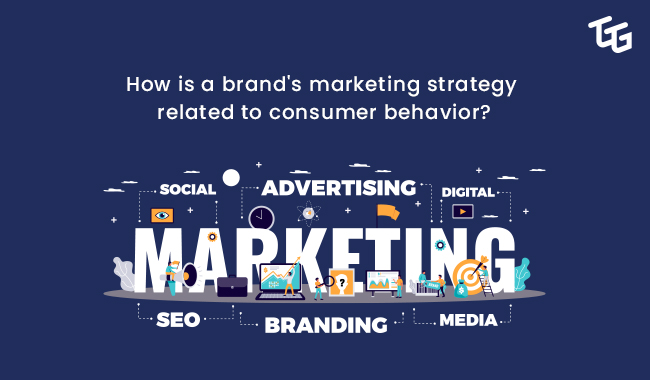The study of how consumers seek, purchase, use, assess, and dispose of products and services is known as consumer behavior. It is the psychology that drives marketing and is used to determine why customers choose one product over another.
But why is consumer behavior so important to brand marketers?
The answer to this question lies in the ever-changing wants and needs of the consumers. It is a basic tenet in the study of Commerce and Economics, that a consumer’s wants are infinite, and are never really satiated.
Studying consumer behavior gives brand marketers a goldmine of data to understand the trajectories of consumer wants, and they can use this information to build marketing strategies that evolve with the changes in consumer wants.
Brand Marketers consider a lot of parameters and indices while studying consumer behavior, and use various layers of research to understand their purchasing and brand engagement patterns. They find information about consumers through surveys, focus groups, observation, interviews, and online research.
Marketers also make decisions about their marketing strategy based on demographic data about their customers. Consumers’ income, educational level, occupation, age, and location are all included in this data. This is referred to as market segmentation.
This data is then utilized to forecast consumer purchase habits and make critical decisions about the goods being sold, such as pricing, the packaging that attracts consumers, and the place and means of distribution that generate the most revenue.
The things a company needs for long-term stability and success don’t end at having a great product – what’s vital is addressing the wants of the consumers, understanding what makes them tick, and communicating to them in ways that make them engage with your brand.
Consumers can get extremely “brand conscious”, meaning that they usually consume products that are “branded” i.e. carry a distinct look and feel and assure them of quality, or tend to prefer products that come under a single brand.
The reason behind this peculiar behavior is simple – these brands employ a marketing strategy that aligns with consumers’ changing wants and satiates their needs, thus giving them a unique customer experience and making them special valued. This indicates that the consumer has responded well to the brand’s marketing strategy. A successful marketing strategy positions the brand as the sole satisfier of customers’ wants and needs – be it physical, psychological, sociological, or self-actualization needs.
David Ogilvy, who is considered to be the father of advertising, famously stated, “Brand is something that remains when the factory burns.” Marketers know that consumers are attracted towards brands more than products, so they use a brand’s recall value to attract consumers to the products and services the company offers.
A brand’s marketers not only seek to understand what makes consumers come to their brand but also what doesn’t. Consumer behavior also entails knowing what brands consumers are attracted to, and why. Equipped with this understanding, marketers must then create a brand marketing strategy that attracts loyal customers.
Here is an outline of a brand marketing strategy, and how it influences consumer behavior:
First, marketers develop an attractive brand image that inspires consumers to make the purchase. A brand image is all about the look, aesthetic, and overall appeal of the brand, establishing its approachability and trustworthiness. Getting the brand image right and distinct can be a time-consuming and complicated process, but nailing it would yield both short-term and long-term benefits for the brand.
Between marketers and consumers, a strong brand reputation establishes a foundation of trust. Marketers use this foundation of trust to influence consumers’ purchasing behavior. To control this decision-making process, one only needs to attract and pique people’s interest in your brand. It’s critical to build brand awareness to not only capture, but also retain the customer’s attention. Furthermore, brand awareness is considered to be multi-faceted, with a significant impact on purchasing behavior and risk assessment. Once customers are made aware of a brand, they are more likely to purchase its products.
The company will notice an increase in sales and demand for the product once a recognizable brand identity has been formed for it, and is actively striving to lead consumers’ purchase decisions in the right direction. The brand’s economic value will increase, not only as a result of the offering but also as a result of the customers’ perception of the brand. This will also increase the company’s brand value.
Both external and internal factors of a company have a significant impact on a consumer’s decision-making process, according to studies. Colors and designs may attract the attention of buyers, but emotional appeals to consumers have a higher ability to influence purchasing behavior. Brands have begun to focus on people along with their products. Marketing strategists understand how we think about purchases and what triggers that thought process. It is also important to note that consumers usually prefer brands whose values match or resonate with theirs.
Thus, branding and brand marketing strategists learn from and influence consumer behavior by learning about the consumers’ purchasing patterns and preferences from information like their age, region they belong to, and their socioeconomic backgrounds, and create marketing strategies that match with that behavior. The purpose of branding as a marketing strategy is to create an emotional connection and resonance between the consumers and the brand.
Agencies study consumer behavior to build branding and marketing strategies that attract more customers and generate more leads, but it is a process that abounds with possibilities of errors. Thus, it is important to choose a well-reputed brand marketing agency for successful customer acquisition and retention.
The Go-To-Guy is an end-to-end brand marketing agency that equips companies with foolproof brand marketing strategies that make them known and grow.

